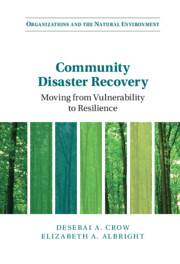Refine search
Actions for selected content:
14 results
Investigating the status of mixed-methods research in CALL published research articles
-
- Journal:
- ReCALL , First View
- Published online by Cambridge University Press:
- 11 November 2025, pp. 1-18
-
- Article
-
- You have access
- Open access
- HTML
- Export citation
Peer workers as facilitators of psychiatric advance directives: a mixed-methods study on recovery
-
- Journal:
- Irish Journal of Psychological Medicine , First View
- Published online by Cambridge University Press:
- 24 October 2025, pp. 1-11
-
- Article
-
- You have access
- Open access
- HTML
- Export citation
A mixed-method approach in ergonomic analysis utilising personalised data dashboards
-
- Journal:
- Proceedings of the Design Society / Volume 5 / August 2025
- Published online by Cambridge University Press:
- 27 August 2025, pp. 179-188
-
- Article
-
- You have access
- Open access
- HTML
- Export citation
Exploring barriers, needs, and facilitators for clinical and translational research in Oklahoma: A sequential mixed-methods study
-
- Journal:
- Journal of Clinical and Translational Science / Volume 9 / Issue 1 / 2025
- Published online by Cambridge University Press:
- 18 June 2025, e155
-
- Article
-
- You have access
- Open access
- HTML
- Export citation
The place of the relative at the time of the announcement of cancer progression: BABEL – a mixed-methods study
-
- Journal:
- Palliative & Supportive Care / Volume 22 / Issue 5 / October 2024
- Published online by Cambridge University Press:
- 26 June 2023, pp. 1017-1026
-
- Article
-
- You have access
- Open access
- HTML
- Export citation
Mixed-method assessment of caregiver feeding practices in early care and education centres during COVID-19
-
- Journal:
- Public Health Nutrition / Volume 26 / Issue 1 / January 2023
- Published online by Cambridge University Press:
- 08 November 2022, pp. 12-22
-
- Article
-
- You have access
- Open access
- HTML
- Export citation
Virtual engagement of under-resourced communities: Lessons learned during the COVID-19 pandemic for creating crisis-resistant research infrastructure
-
- Journal:
- Journal of Clinical and Translational Science / Volume 6 / Issue 1 / 2022
- Published online by Cambridge University Press:
- 04 April 2022, e44
-
- Article
-
- You have access
- Open access
- HTML
- Export citation

Community Disaster Recovery
- Moving from Vulnerability to Resilience
-
- Published online:
- 08 October 2021
- Print publication:
- 21 October 2021
Health-related quality of life in adult CHD surgical patients in a low middle-income country: a mixed-methods study
-
- Journal:
- Cardiology in the Young / Volume 30 / Issue 8 / August 2020
- Published online by Cambridge University Press:
- 23 June 2020, pp. 1126-1137
-
- Article
- Export citation
A Community Engagement Advisory Board as a strategy to improve research engagement and build institutional capacity for community-engaged research
-
- Journal:
- Journal of Clinical and Translational Science / Volume 2 / Issue 2 / April 2018
- Published online by Cambridge University Press:
- 08 August 2018, pp. 66-72
-
- Article
-
- You have access
- Open access
- HTML
- Export citation
Supporting in an existential crisis: A mixed-methods evaluation of a training model in palliative care
-
- Journal:
- Palliative & Supportive Care / Volume 16 / Issue 4 / August 2018
- Published online by Cambridge University Press:
- 20 June 2017, pp. 470-478
-
- Article
- Export citation
A Mixed-methods Pilot Study of Disaster Preparedness and Resiliency Among Faith-based Organizations
-
- Journal:
- Prehospital and Disaster Medicine / Volume 29 / Issue 2 / April 2014
- Published online by Cambridge University Press:
- 21 February 2014, pp. 127-133
- Print publication:
- April 2014
-
- Article
- Export citation
Evaluating the environmental impact of payments for ecosystem services in Coatepec (Mexico) using remote sensing and on-site interviews
-
- Journal:
- Environmental Conservation / Volume 38 / Issue 4 / December 2011
- Published online by Cambridge University Press:
- 03 November 2011, pp. 426-434
-
- Article
-
- You have access
- HTML
- Export citation
Measuring food insecurity and hunger in Peru: a qualitative and quantitative analysis of an adapted version of the USDA’s Food Insecurity and Hunger Module
-
- Journal:
- Public Health Nutrition / Volume 13 / Issue 10 / October 2010
- Published online by Cambridge University Press:
- 08 December 2009, pp. 1488-1497
-
- Article
-
- You have access
- HTML
- Export citation
